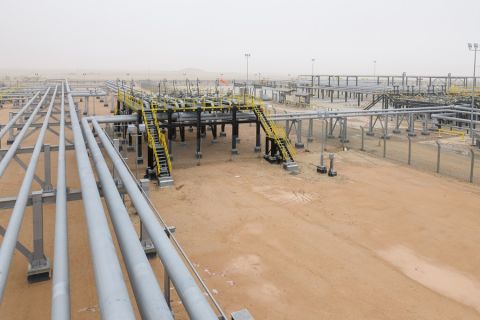Ecuador's heavy-crude oil pipeline will restart pumping on Dec. 31 following maintenance to solve issues caused by erosion in the country's Amazon region, while exports of Napo crude will begin on Jan. 3, crude transport company OCP Ecuador said on Wednesday.
The government of President Guillermo Lasso declared force majeure over its oil exports and production contracts on Dec. 13 after ongoing erosion in the region forced a halt to pumping on the private OCP pipeline and the state-owned SOTE pipeline.
"OCP Ecuador has managed to complete the construction of the bypass ahead of time and is ready to restart operations this December 31, a week earlier than initially planned," the company said in a statement.
The new bypass extends for approximately 4 kilometers (2.5 miles) and is located in the Piedra Fina area where, at the beginning of December, the advance of regressive erosion along the Coca River was found to have restarted.
The SOTE pipeline, which is operated by state-owned oil company Petroecuador, expects to begin pumping from Dec. 30, once it has finished construction of the pipeline's seventh bypass.
The impact of the pipeline shutdown could hit some $600 million, according to the government.
The country saw output of 91,479 barrels of oil on Dec. 27, down from an average of 485,000 barrels of per day before the emergency gripped Ecuador's oil industry, according to the energy ministry.
In April 2020, both pipelines in the country suffered a pipeline rupture due to the sinking of land in the area, which led the country to declare force majeure in its exports and lower its production levels.
Regressive erosion along the Coca River began last year and has also threatened the water catchment of the Coca Codo Sinclair hydroelectric plant, the largest in the country, and has already closed one of the main roads that connects the capital Quito with the Amazon.
Recommended Reading
Shipping Industry Urges UN to Protect Vessels After Iran Seizure
2024-04-19 - Merchant ships and seafarers are increasingly in peril at sea as attacks escalate in the Middle East.
Paisie: Crude Prices Rising Faster Than Expected
2024-04-19 - Supply cuts by OPEC+, tensions in Ukraine and Gaza drive the increases.
Report: Freeport LNG Hits Sixth Day of Dwindling Gas Consumption
2024-04-17 - With Freeport LNG operating at a fraction of its full capacity, natural gas futures have fallen following a short rally the week before.
Permian NatGas Hits 15-month Low as Negative Prices Linger
2024-04-16 - Prices at the Waha Hub in West Texas closed at negative $2.99/MMBtu on April 15, its lowest since December 2022.
BP Starts Oil Production at New Offshore Platform in Azerbaijan
2024-04-16 - Azeri Central East offshore platform is the seventh oil platform installed in the Azeri-Chirag-Gunashli field in the Caspian Sea.


